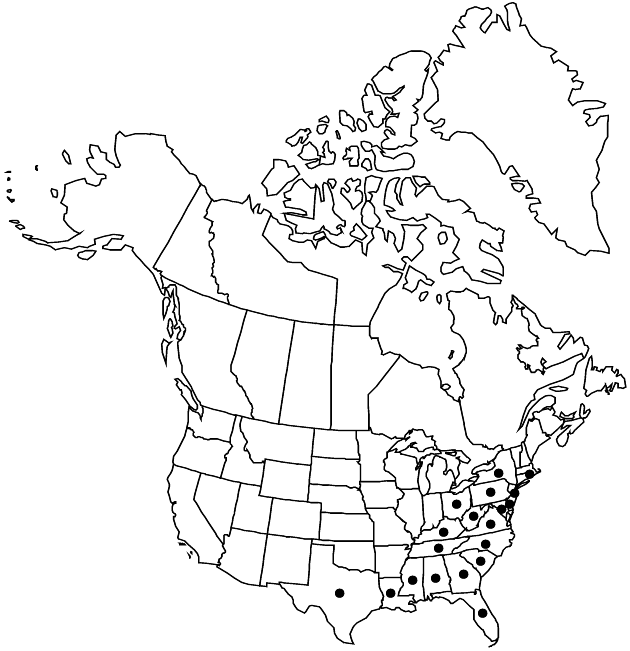Chrysopsis mariana
Sketch Bot. S. Carolina 2: 335. 1823.
Biennials or short-lived perennials, 20–90 cm; fibrous-rooted or with short lateral rhizomes (new rosettes borne on fibrous-roots or at ends of short lateral rhizomes or roots). Stems erect or ascending (often purplish), usually simple, sparsely to densely silky-sericeous (hairs sometimes long, twisting together at ends). Leaves: basal blades spatulate to oblanceolate, 15–250 × 4–40 mm, bases attenuate, margins obscurely dentate apically or entire, apices acute to obtuse, faces long-sericeous, glabrescent; cauline sessile, blades lanceolate to elliptic-oblong, 10–30 mm, reduced distally, margins entire or obscurely dentate, ciliate, apices acute, faces long-silky-sericeous or glabrate. Heads 1–50, usually in crowded subumbelliform arrays. Peduncles (from axils of distalmost cauline leaves or bracteoles) 0.5–5 cm, densely stipitate-glandular (glands yellow to brown); bracteoles 0–3, linear, stipitate-glandular. Involucres campanulate, 7–10 mm. Phyllaries in 4–5 series, erect, linear, unequal, 0.8–1.4 mm wide, apices acute, abaxial faces densely stipitate-glandular. Ray-florets 10–22; laminae 8–11 × 2–3 mm. Disc-florets 25–40; corollas 5–7 mm, lobes 0.5 mm. Cypselae (stramineous to purple) 2–3 mm, without ridges, shallowly ribbed or smooth, faces sparsely short-strigose; pappi in 2–3 series: outer of bristles 0.5–1 mm, inner of weakly to moderately clavate bristles 4–6 mm. 2n = 8, 16, 24, 32.
Phenology: Flowering Aug–Sep (n) to Nov–Dec (occasionally spring, Florida).
Habitat: Open to partially shaded, disturbed sandy and clay soils, open areas in pine and oak woods, scrub, natural rock outcrops, fields, roadside embankments
Elevation: 0–700 m
Distribution

Ala., Del., Fla., Ga., Ky., La., Md., Miss., N.J., N.Y., N.C., Ohio, Pa., R.I., S.C., Tenn., Tex., Va., W.Va.
Discussion
Chrysopsia mariana is present in the Coastal Plain, Piedmont, Appalachian Plateaus, Valley and Ridge, and Blue Ridge regions. All four ploidy levels occur in partially overlapping areas in Florida, but only the hexaploid occurs in other states (J. C. Semple and C. C. Chinnappa 1986). Larger involucres occur in plants with higher ploidy levels.
Selected References
None.
Lower Taxa
"thin" is not a number."[" is not declared as a valid unit of measurement for this property."]" is not declared as a valid unit of measurement for this property.